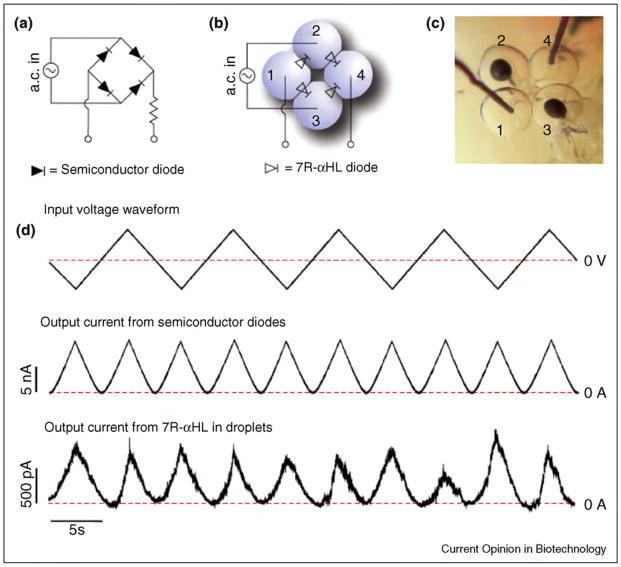Figure 21.
Comparison between the performance of a full-wave bridge rectifier based on semiconductor diodes and a full-wave rectifier based on engineered biological pores. (a) Circuit diagram of a bridge rectifier with four diodes to achieve full-wave rectification. (b) Illustration of a four-droplet network to form a bridge rectifier with the mutant α-hemolysin protein 7R-αHL. (c) Photograph of the system in (b). (d) Electric properties of the droplet network circuit: input 0.1 Hz triangular wave (top); output current observed from a bridge rectifier using semiconductor diodes (middle); output current from a bridge rectifier system based on a droplet interface bilayer network (bottom). Figure reprinted from reference [109] with permission.

